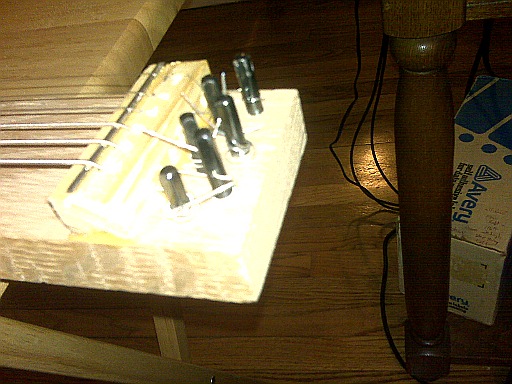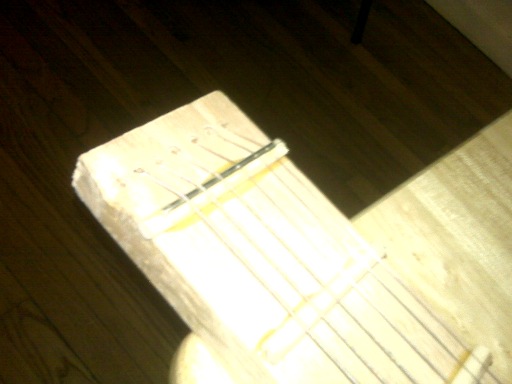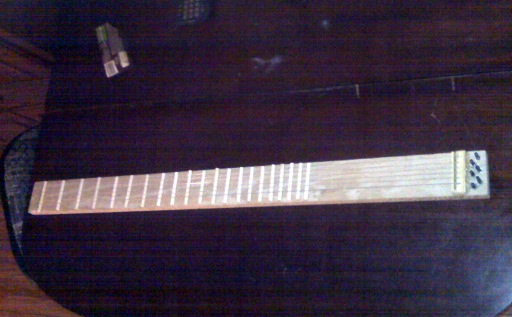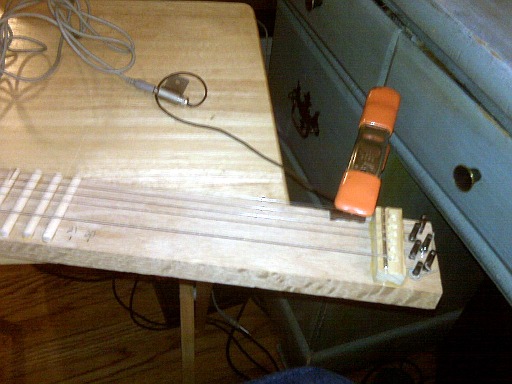I found a piece of oak at a local woodworking store for under $3. They said – board – I saw – instrument. That and a couple of $0.69 birch dowels and I went home with a design of a cheap instrument in mind. Since I’m in the 11 edo (equal division of the octave = notes per octave) class I thought is would be cool to make the instrument in that tuning. I used the dowels for frets. Fret placement was calculated at the Experimental Musical Instruments fret placement calculator and marked off the placement with a metal meter stick after gluing on the nut and bridge.  I used a couple of the fret wires I pulled off of the 12 edo to fretless bass conversion to give a bit more support to the bridge and nut. Zither pins are used to tune the instrument. A light guitar string set is used and the strings are kept in place by running them through holes that catch the ball end.
I used a couple of the fret wires I pulled off of the 12 edo to fretless bass conversion to give a bit more support to the bridge and nut. Zither pins are used to tune the instrument. A light guitar string set is used and the strings are kept in place by running them through holes that catch the ball end.
As I was tuning to a synthesizer in 11 edo I broke the “A” string – but as it turns out that wasn’t all that bad of a happening. I tuned the “D” and “E” the same and used it as a drone. To record it I clamped a contact microphone to the 11 edo stick and this is a real roughly jam to demo the instrument.
Audio PlayerProject cost minus the microphone is less than $20.


Leave a Reply